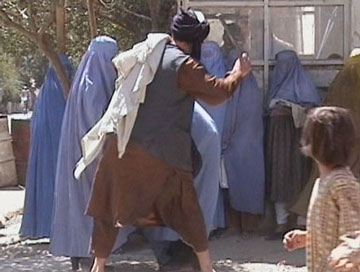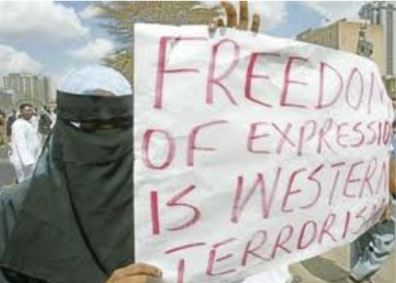
The term ‘Salafism’ is one of the more widely employed concepts in two arenas: the media and religion. Linguistically the term ‘Salaf’ refers to what has gone before, so that the salaf of a man are his 'ancestors'.
FROM ITS HISTORICAL origins in the 8th century CE Salafism had a broad connotation embracing all the schools that proceeded on the model of the ‘Righteous Predecessors’, these being the Companions and those that came after them. Following the ordeal of the ‘created Qur’ān’ the term came to be applied to the Ahl al-Sunna wal-Jamā‘a (‘The Community of the Sunna and the Consensus’), that is, the general trend of Muslims as opposed to the Mu‘tazila, the Ahl al-‘Adl wal-Tawhīd (‘The Community of Justice and Monotheism’) and the Shi‘ite Ahl al-Bayt (‘The Community of the Prophet’s Family’). As a result of political and social vicissitudes the term ‘Salafism’ subsequently came to be applied to the followers of Imam Ahmad Ibn Hanbal (ob. 855 CE) the historical founder of Salafism and the Ahl al-Hadith. By the age of Imam Ibn Taymiyya (ob. 1328) Salafism had become a closed doctrinal tendency, so that by the time Shaykh Muhammad ibn ‘Abd al-Wahhab (ob. 1791) allied himself with Saudi rule in 1747, it could turn into an extremist Wahhabi Salafism, closely bound up with the doctrinal violence that formed the ideological foundation for the unification of the Kingdom of Saudi Arabia.
Nevertheless Wahhabi Salafism has been forced to palliate its historical belligerency and takfīrī characteristics as a result of the intervention of political authority, the pressure of the international community and of imperatives for reform, even if there still remains a takfīrī basis to its methodology, its books and fatwās. Wahhabi Salafism has itself spawned some contemporary Salafisms, the most notable being:
- Traditional Salafism (relatively accommodating or tamed) represented by the clerical establishment;
- Political or politicized Salafism: which participates in elections and parliaments;
- Jihadi Salafism: followers of the thought of al-Qaeda.
But these contemporary Salafisms are nevertheless united by a discourse of politics and propagation which shares common characteristics, the most notable of which are the following:
The Salafist discourse derives from fear, weakness and a lack of self-confidence
I – Hatred for the ‘other’ (be it a religious or credal foe): a hatred founded upon texts and fatwas and inculcation methodologies which arise [from] the doctrine of al-walā’ wal-barā’ (‘Loyalty and Renunciation’), that is the obligation to befriend the believer and maintain enmity to the infidel. One of its characteristic features is the refusal to issue greetings to Christians, express condolences or participate with them in their festivals, or permit the construction of churches in the Arabian Peninsula, and indeed promoted the issuing of curses upon them and inciting Muslims against them. One mother complained in the Saudi press of a school that had inculcated in her small daughter the hatred of non-Muslims as contained in the Book of Tawhīd. “How can I teach my daughter,” she complained, “to hate the one who discovered insulin or the cure for malaria, or who invented the electric light-bulb and lit up the Islamic world?”
II – The possession of absolute right: Salafist Discourse claims to be founded upon absolute truth, and consequently does not believe in the relativism of intellectual truths. The Salafist believes in the single view and the single explanation and the single true doctrine, consequently he repudiates alternative opinion and cannot accept the culture of debate.
III – The enmity to modernity: in all its aspects – its culture and thought, its institutions and legislation, its arts, theatre, music, songs, dress and food – since “that which resembles a people is a part of them.”
IV – Expanding the arena of the forbidden: prohibiting even the shaving of the beard. Facebook Salafists in Egypt have called for a “Let a million beards grow” campaign to coincide with the month of Ramadan! The prohibition of lengthening the gown down to the ankles or exposing the face of the woman, and the prohibition of social interaction between the sexes. One Saudi shaykh has issued a fatwā calling for the killing of those who call for allowing this social interaction! There are others who call for the Grand Mosque in Mecca to be demolished and rebuilt in a form that prevents men and women from coming into contact with each other, and we might also recall here, for example, the list of prohibitions issued by the Taliban in 1996.
V – Enmity to atmospheres of joy and delight: the aim to restrict the human being via the religious police of the “Committee for Enjoining that which is Permitted and Forbidding that which is Repudiated”, a body which persecutes people in markets and gatherings.
VI – The stirring up of conflict regarding legal matters where differences of interpretation exist, such as visiting graves, asking for the intercession of the Righteous Ancestors, the building of tombs and celebrating the birthday of the Prophet, or the obliteration of historical monuments.
VII – The denigration of women: Salafist discourse is afflicted with a sick hypersensitivity towards anything associated with the female – women’s fashions, their employment, their movement in society, their education, travelling, driving cars and all of their rights. Salafism manifests a dread of womankind, considers her to be the source of temptation and imposes upon her a corrective guardian. One woman in Sudan was condemned to punishment by flogging for wearing trousers, while the Mufti of Australia likened women to “exposed meat” that provokes cats to pounce on them!
VIII – The monopolisation of paradise: based on the Hadīth that says that all Muslims will split into 73 sects, all of whom are destined for Hellfire save one. The Salafists claim that they are this Saved Sect, as opposed to the other Islamic sects such as the Shi‘a, the Sufis and the Ash‘aris, since the creeds of these others ‘contain polytheistic and heretical elements’.
IX – The focus on elements of punishment in the Law: such as the stoning of adulterers, the cutting off of thieves’ hands and the flogging of those who consume alcohol. Similarly, the Salafist discourse supports any political regime that raises the slogan of the Sharī‘a, irrespective of the regime’s tyranny, corruption and oppression of the people, or its confiscation of their rights, such as the Taliban regime which is considered to be the worst example of religious rule.
X – Superficial interpretation of religious texts: without any application of the intellect or a grasp of deeper causes, or the underlying purpose of the legislation. Instead Salafists content themselves with ‘understanding the acts of the Predecessors’, while in fact these Predecessors differed among themselves concerning many a judgment. On this basis the Salafist discourse calls into question the beliefs of 99 per cent of all Muslims!
XI – Obliviousness to the major concerns of the Nation: such as the consultation process, justice, equality, rights, freedoms and political opposition. Similarly, the Salafist discourse disqualifies public demonstrations on the pretext that the ruler is the one to decide who lives or dies and therefore one’s obedience to him is obligatory.
XII – Vehemence: to the point of exaggeration among Salafist imams and shaykhs, and their inability to accept criticism.
XIII – Restriction of the climate of freedoms: advocating the suppression of creativity, promoting conflict with liberal thinkers and rushing to pronounce scholars, intellectuals, artists and poets as ‘infidel’. They make use of mosque pulpits and websites to issue fatwās of incitement against ‘liberals and innovators’. The University of al-Imam in Riyadh actually awarded a first class doctorate to a Saudi researcher for his thesis: “Credal deviancy in the modern culture” in which he proscribed 200 Arab intellectuals, describing them as ‘infidel.’

Suggested Reading
XIV – The legislation of violence: as a means to establish the duty of ‘Enjoining What is Permitted and Removing that which is Repudiated’, either via official, religious police or through the activities of individuals undertaking a ‘defence of the public interest.’
XV – The imposition of religious tutelage over the people: the Salafists consider themselves the guardians of belief and the defenders of religion, of virtue and of ethics.
These, in conclusion, are the most conspicuous features of the now dominating Salafist discourse – a discourse which suffers from a closing-in upon itself, from structural features that derive from fear, weakness and a lack of self-confidence, and an inability to open up to the basics of the modern age and draw benefit from them. Such a discourse cannot be relied upon to effect religious reform – it rather constitutes a factor that impedes resurgence and progress, for it remains apprehensive of political change and openly fears any social transformation. This is because it sees its future in the past, the past of the Predecessors, the Salaf. By turning backwards like this it merely stirs up deep divisions to obsess the people, and dissipate their efforts and energies on that which is unattainable. Indeed it acts to deepen religious and doctrinal fissures and divide up the members of a single community purely on the basis of their religious beliefs. This is the most perilous thing that can afflict any society.



